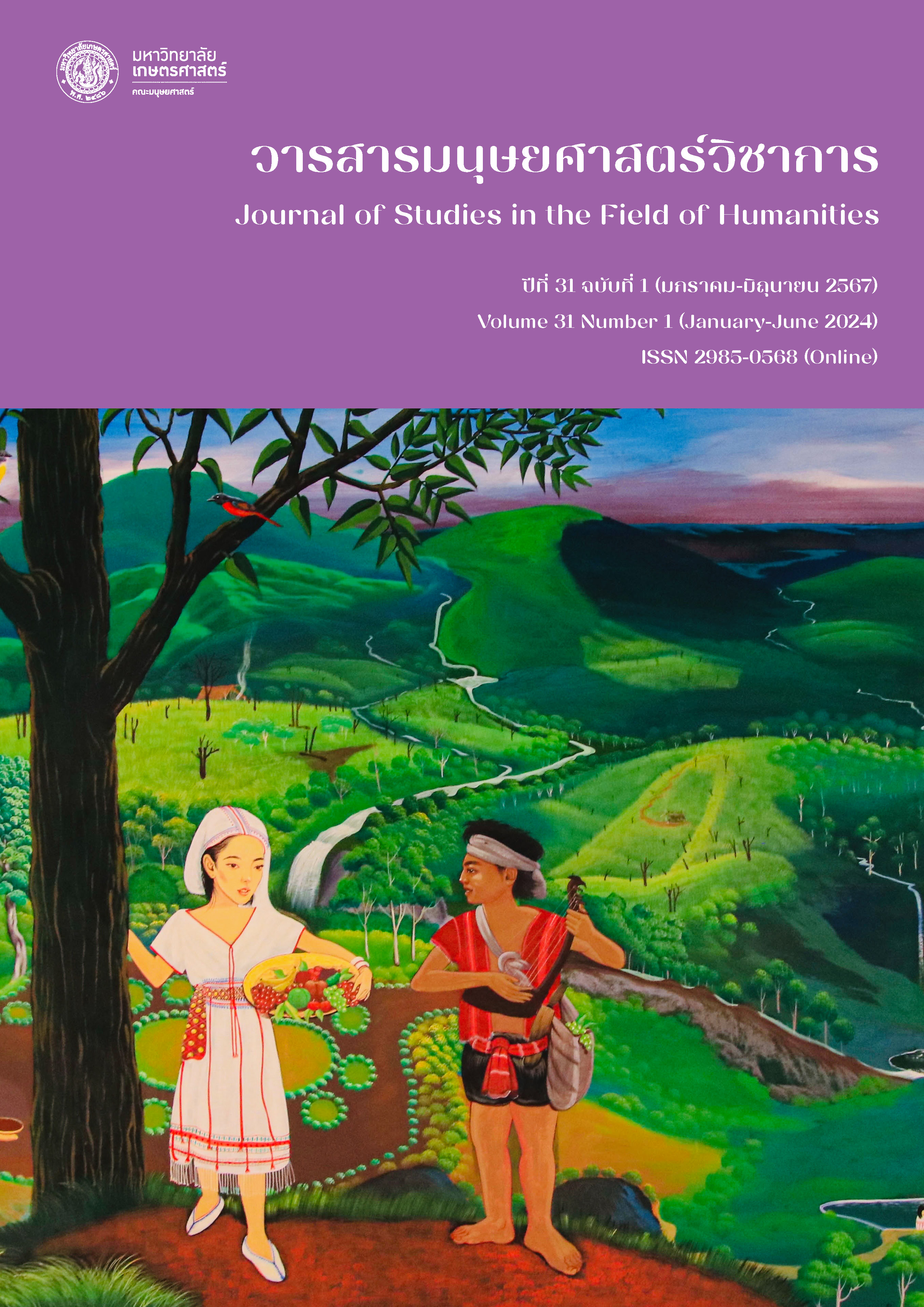The Persistence of the Thai Fiddle in Current Social and Culture Conditions
Main Article Content
Abstract
Everything in this world must adjust itself to the surrounding environment. The Thai fiddle, one of the representatives of Thai classical music, is a traditional Thai instrument that is confronted with challenges because cultures and music popularity have changed over time. The persistence of this conventional Thai music custom depends upon the maintenance of the value of its Thai music heritage, but it is difficult to deny that a purpose of music is to entertain its listeners, and therefore the contemporary listeners’ appreciation has played a vital role. The compromise between classical culture conservation and adjustment to the culture of the current generation context is critical. The result of the idea is to balance modernization and traditional uniqueness. This article has reviewed the apparent evidence of the challenges Thai classical music has faced through Thai fiddle stories. Moreover, suggestions for the preservation of the Thai fiddle are made from the micro level – family – to the macro level – government – so that the Thai fiddle and classical music can be with Thai society endlessly.
Article Details

This work is licensed under a Creative Commons Attribution-NonCommercial-NoDerivatives 4.0 International License.
References
คมชัดลึกออนไลน์. (2555, 31 พฤษภาคม). โลกเปลี่ยนไป ดนตรีไทยก็เปลี่ยนแปลง 3. สืบค้นจาก https://www.komchadluek.net/entertainment/131588.
ณรงค์ เขียนทองกุล. (2541). ความเชื่อกับดนตรีไทย. วารสารมนุษยศาสตร์วิชาการ, 6(1), 44-56.
ปราโมทย์ เที่ยงตรง. (2557). ปัจจัยที่ส่งผลต่อทัศนคติและพฤติกรรมที่เกี่ยวข้องกับดนตรีไทยของนักเรียนระดับมัธยมศึกษากลุ่มโรงเรียนรัฐบาล จังหวัดเพชรบุรี. วารสารสถาบันวัฒนธรรมและศิลปะ มหาวิทยาลัยศรีนครินทรวิโรฒ, 16(1), 150-160.
เพชรดา เทียมพยุหา, มานพ วิสุทธิแพทย์, และกาญจนา อินทรสุนานนท์. (2557). การศึกษาดนตรีร่วมสมัย: กรณีศึกษาวงกำไล. วารสารศิลปกรรมศาสตร์ มหาวิทยาลัยขอนแก่น, 6(1), 69-88.
มติชนออนไลน์. (2563, 26 สิงหาคม). (คน) ดนตรีไทย ขนบเก่า ในโลกใหม่ ความท้าทายแห่งยุคนิวนอร์มอล. สืบค้นจาก https://www.matichon.co.th/prachachuen/prachachuen-scoop/news_2258020.
ราชบัณฑิตยสถาน. (2556). พจนานุกรมฉบับราชบัณฑิตยสถาน พ.ศ. 2554. กรุงเทพฯ: ราชบัณฑิตยสถาน.
วิสุทธิ์ ไพเราะ. (2557). การบริหารจัดการดนตรีไทยร่วมสมัย กรณีศึกษาวงโจงกระเบน. วารสารกระแสวัฒนธรรม, 15(27), 16-27.
สารานุกรมไทยสำหรับเยาวชน. (2516). ดนตรีไทย. สืบค้นจาก https://www.saranukromthai.or.th/Ebook/BOOK1/pdf/book1_1.pdf.
สำนักงานคณะกรรมการวัฒนธรรมแห่งชาติ. (2551). ความหมายวัฒนธรรม. สืบค้นจาก http://www.culture.go.th/study.php?&YY=2548&MM=5&DD=16.
สุจิตต์ วงษ์เทศ. (2556). สิบสองภาษา สำเนียงเพื่อนบ้าน. ปทุมธานี: คณะสังคมวิทยาและมานุษยวิทยา มหาวิทยาลัยธรรมศาสตร์.
สุรพล สุวรรณ. (2549). ดนตรีไทยในวัฒนธรรมไทย. กรุงเทพฯ: จุฬาลงกรณ์มหาวิทยาลัย.
Bogen, S. A. (2019). A History of non-Western bowed instruments. A look into the Eastern history of the modern-day violin. Retrieved from https://digitalcommons.liu.edu/cgi/viewcontent.cgi?article=1057&context=post_honors_theses.
Britannica. (2019). Fiddle. Retrieved from https://www.britannica.com/art/fiddle.
Britannica. (2021). Guitar. Retrieved from https://www. britannica.com/art/guitar.
Cornwel-Smith, P., & Goss, J. (2013). Very Thai: Everyday popular culture. Bangkok: River Books.
Korean Traditional Performing Arts Foundation. (2011). Haegeum: Two string fiddle. South Korea: Korean Traditional Performing Arts Foundation.
Lertworaruttikul, P. (2008). Attitude of Thai teenagers towards Thai classical music (2007). Bangkok: Language Institute, Thammasat University.
Liang, T. P. (1970). Chinese musical instruments & pictures: Edited by Tsai-ping Liang. Taiwan: Chinese Classical Music Association.
Miller, T. (2010). Appropriating the exotic: Thai music and the adoption of Chinese elements. Asian music, 41(2), 113-148.
Nye, J. S. (2009). Soft power: The means to success in world politics. USA: Public Affairs.
Wagner, R., & Ingold, T. (2016). The invention of culture. USA: University of Chicago Press.


